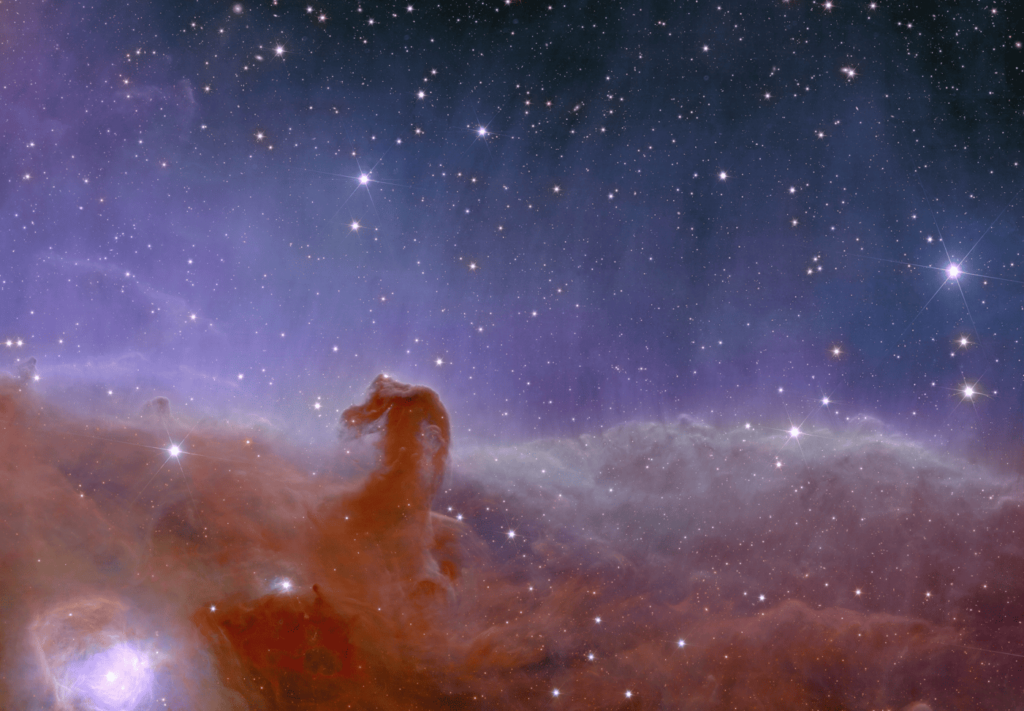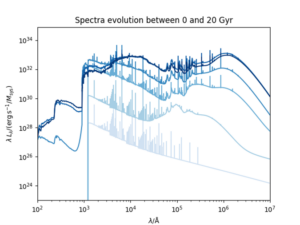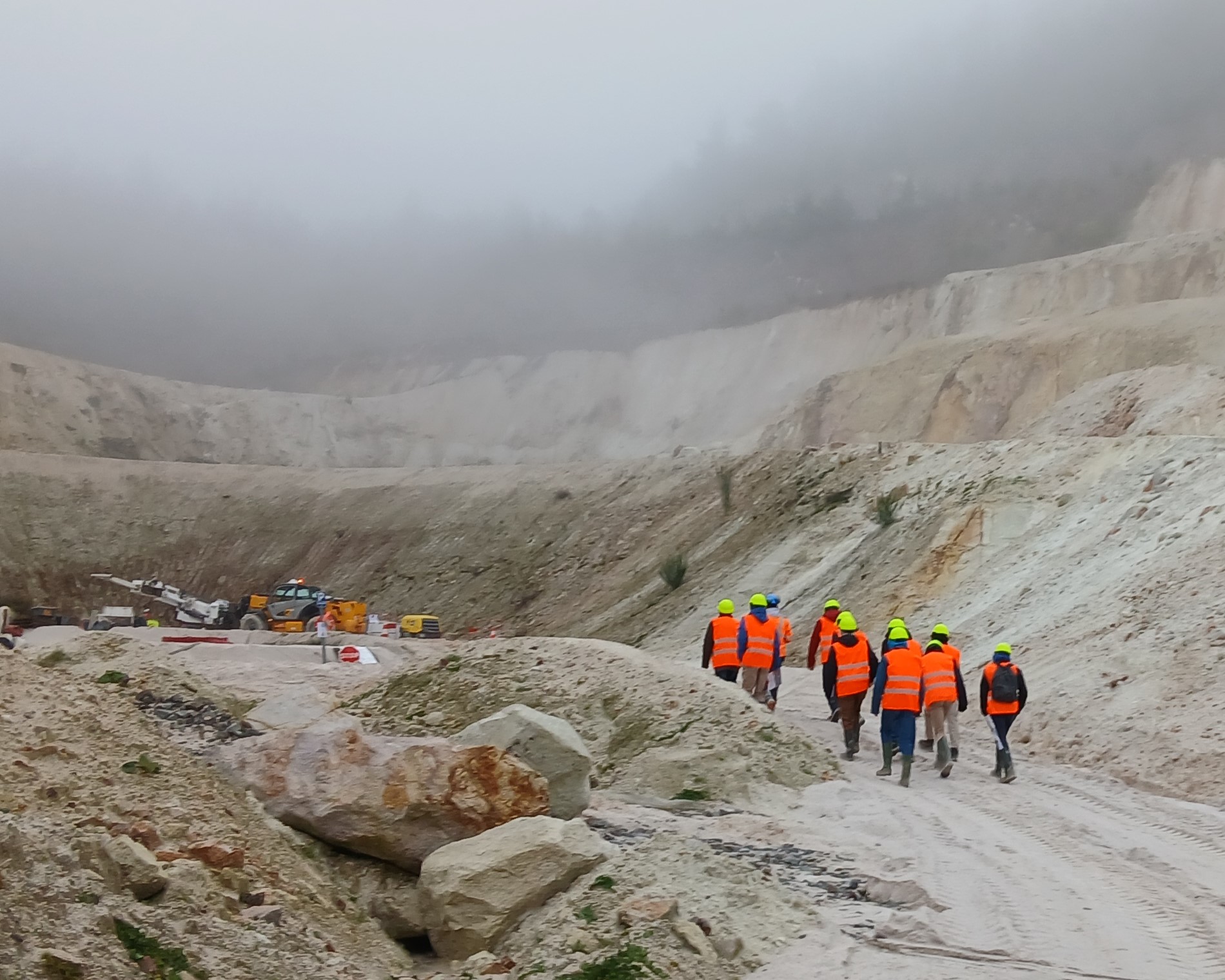Particles at the edge of the Universe: a scientific experiment with Trimestre Recherche


High-energy physics, a branch of physics that studies elementary particles, which are the smallest components of matter, as well as the fundamental forces that govern them, is making major advances and generating countless applications. The standard model of particle physics describes fundamental particles and their interactions, while the concordance model of cosmology explains the evolution of the universe by integrating dark matter, dark energy and cosmic expansion. Together, these models form a solid theoretical framework that allows for the accurate prediction of many phenomena, from elementary particles to the large structures of the universe. These issues, at the crossroads of conceptual and technological challenges, make high-energy physics a crucial field with cultural, societal and economic implications.
In this context, the UNP TR at Mines Paris – PSL allows second-year engineering students to explore these issues through immersion in cutting-edge research laboratories. The aim is to provide them with the essential theoretical foundations, to enable them to apply the knowledge they acquired in the first year, and to introduce them to the specialized teaching of the third year. This term also aims to illustrate the impact of fundamental physics on society and its concrete applications.
As part of the PNU Research Quarter, Yannis Baron and Matti Comba, engineering students at Mines Paris – PSL, joined the Kastler Brossel Laboratory (LKB) to work on an ultra-precise measurement technique using trapped ion spectroscopy. Their objective was to ensure the transmission of a very precise frequency optical signal through a 200-meter optical fiber without loss of coherence. This signal functions as an ultra-stable clock for scientific experiments, but it can be slightly distorted by tiny disturbances called phase noise, a bit like interference that scrambles a radio message. By controlling this interference, their work contributes to refining essential measurements in physics, particularly to better understand the fundamental properties of matter.
The students developed an experimental device for evaluating and correcting the phase noise introduced by the fiber, by identifying the sources of disturbance, particularly the temperature variations in the laboratory. Using both theoretical concepts and experimental tools (such as lasers, light sensors and devices that modulate light waves), they improved a system capable of correcting signal disturbances. This device will soon be installed to guarantee even more reliable transmission of the ultra-precise signal delivered by the REFIMEVE network, a research infrastructure that transports extremely stable time and frequency references via optical fibers, serving scientific research in France and Europe.
Laurent Hilico, professor at the University of Évry Val d’Essonne (Paris-Saclay) and researcher at the Kastler Brossel Laboratory, praises the quality of the work carried out:
An excellent internship in every respect (human, understanding of physics, achievements, etc.) which has led to a final assembly that will soon be installed at the output of the extraction station of the ultra-stable signal delivered by the REFIMEVE network.
The project led by Yannis Baron and Matti Comba illustrates the value of the Research Quarter: it is an immersive learning experience for the students, coupled with a concrete and lasting scientific contribution. By improving the transmission of optical reference signals, their work paves the way for experimental advances in spectroscopy and metrology.
In the experiment led by Mr. Hilico, lasers are used to take measurements on an ion trap. The aim of the experiment is to refine the measurement of the ratio between the mass of the proton and that of the electron in order to take measurements on an ion trap and achieve a new record precision of 10−12.
This measurement is part of the international CODATA project, which aims to improve our knowledge of the fundamental constants of physics. In fact, this improvement in the precision of our measurements would eventually allow us to test models beyond the standard model of physics. Our system was therefore used to better control the precision of the experiment’s lasers in order to achieve a new record of precision in the long term!
Using scientific documentation provided by Mr. Hilico, we were able to set up a test device that we assembled element by element. For each element assembled, we made sure that the signal obtained met our expectations and took all the necessary power measurements to leave nothing to chance. After trying out an initial experimental set-up, we set up a second, more efficient one to take phase noise measurements via the generated correction. To take our measurements, we launched an acquisition program that could run for up to two whole weeks.
Once the experimental device had been tested on several lengths of fiber, we designed a more condensed model that we were able to assemble at the end of our internship.
Our work has enabled the installation of a new element in the cabinet of the REFIMEVE extraction station. The system we have built will eventually be reproduced in triplicate to serve the needs of several experiments at the LKB and at LERMA, a neighboring laboratory. Thanks to this device, we have succeeded in significantly reducing the phase noise induced by the optical fibers and thus enable the continuation of Mr. Hilico’s experiment, which aims to achieve a new record of precision in the measurement of the mp/me ratio of the order of 10−12. It also allowed us to observe that the phase noise in the fibers is more than significant and that it is therefore necessary to consider compensating it over as many fiber sections as possible.
The Trimestre Recherche (TR) internships are not only a scientific immersion for the students of Mines Paris – PSL: they are part of a long-term research dynamic for the laboratories that host them. By integrating ambitious projects, the engineering students make a concrete contribution that extends well beyond the few months of the internship. It is in this context that Camille Desvigne, a student at Mines Paris – PSL, completed an internship at the Institute of Astrophysics of Paris (IAP), under the direction of Professor Brigitte Rocca Volmerange, in 2022-2023. His subject? The study of the photometric evolution of galaxies up to the dark ages of the universe, which consists of analyzing how the light emitted by galaxies has changed over time, going back to a very ancient era when the universe was still young and devoid of major light sources. This research was conducted in direct connection with the Euclid space mission.
One of the great challenges of astrophysics is to trace the appearance of the first galaxies in the universe. These immense collections of stars, gas and dust formed gradually, marking the end of the dark ages, a period following the Big Bang when the universe, still filled with neutral gas, was almost devoid of visible light. To study this transition, scientists use photometry, a technique that measures the intensity and color of light emitted by celestial objects and received through the filters of telescope cameras. By analyzing these light variations, they seek to understand how and when galaxies emerged and began to illuminate the universe.
To answer these questions, researchers rely on theoretical models and observations made by space telescopes such as the James Web Space Telescope (JWST) and Euclid. The objective of Camille’s internship was to model the evolution of galaxies using a specific computer code: Pegase (Programme d’Étude des Galaxies par Synthèse Évolutive). Developed by the astrophysicists in charge of the internship and published in 2019 in the journal Astronomy & Astrophysics (A&A) to model the evolution of galaxies over time, it simulates the way in which stars, gas and dust evolve and interact on the scale of a galaxy and how these interactions influence the light emitted, taking into account parameters such as the formation of stars, their evolution and their extinction.

Evolution of the spectra for the elliptical scenario with attenuation of the IGM

Evolution of the spectra for the spiral scenario with attenuation of the IGM
These two figures illustrate the evolution of the emission spectra for two types of galaxies – elliptical (in red) and spiral (in blue) – taking into account the attenuation of the intergalactic medium (IGM). This phenomenon corresponds to the absorption and scattering of light from galaxies by the gas and dust present between them, thus modifying the observed spectra.The curves were obtained with the PEGASE code, assuming the formation of galaxies very early in the history of the Universe. They represent different stages of stellar evolution, from the young ages (light colors) to the oldest (dark colors), over a period of 20 billion years.
In concrete terms, Pégase makes it possible to calculate the color and luminosity of a galaxy at different times in the universe, based on known physical laws. These simulations are essential for comparing theoretical models with observations from space telescopes and thus better understanding the formation and evolution of galaxies. Pégase is used in particular to analyze the effects of cosmological constants, such as the expansion of the universe, on the evolution of galaxies. Based on the work of previous trainees and an analysis of the data by instrumentalists, Camille calculated the colors, magnitudes and properties of distant galaxies according to their age and distance.
These simulations are essential for comparing theoretical models with space telescope observations and thus better understanding the formation and evolution of galaxies. Thus, by combining simulations obtained with Pégase and a theoretical analysis of the results obtained, Camille was able to calculate the sensitivity of colors and magnitudes to variations in cosmological parameters such as the Hubble constant (for which there are multiple accepted values).
The Euclid space mission, launched in July 2023, aims to map the universe to better understand the nature of dark energy. This mysterious component is responsible for the accelerated expansion of the universe and is thought to account for around 70% of it. Unlike the matter we know and dark matter, dark energy neither produces nor blocks light, making it impossible to observe directly. Scientists deduce its existence by studying distant galaxies and analyzing how a mysterious force seems to accelerate the expansion of the universe. To interpret the observations of this satellite, it is crucial to have precise models of the evolution of galaxies. Thanks to Camille’s results, published in the form of tables that can be used by the scientific community, astrophysicists will be able to compare theoretical predictions with real data and refine our understanding of the expanding universe.
The proposed program was very ambitious. Camille obtained the desired results in record time, thanks to intensive work, and wrote them up for publication in the peer-reviewed journal Astronomy & Astrophysics (A&A). This publication will be her contribution to Euclid, a project in which the Institut d’Astrophysique de Paris is heavily involved.
Brigitte Rocca Volmerange, professor emeritus and internship supervisor
This internship perfectly illustrates the complementarity between theory and practice, which is at the heart of the pedagogy of Mines Paris – PSL. By carrying out real research work, the students of the Research Term make a tangible contribution to the laboratories that host them. For these structures, these internships are an opportunity to integrate motivated young talents, capable of bringing a fresh perspective and cutting-edge skills.
With her work on the evolution of galaxies, Camille Desvigne is part of this dynamic: her internship was not limited to an academic exercise, but directly contributed to research on an international scale.

In a world of perpetual technological transition, society needs engineers capable of understanding, supporting and designing complex systems, while gu...